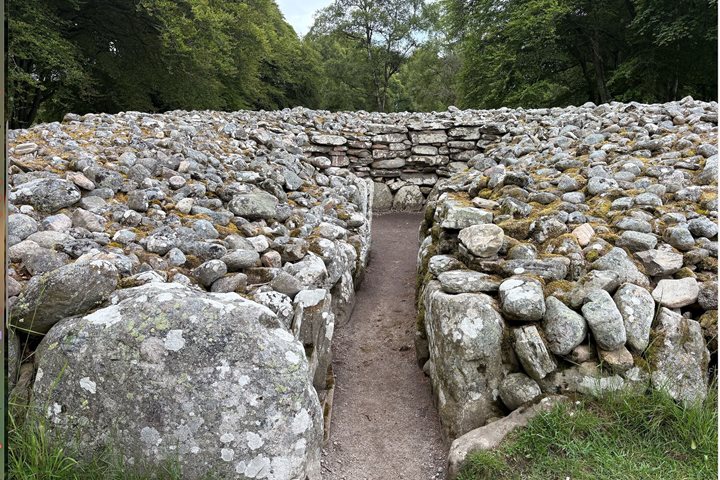We sailed from Oban to Craignure on the Isle of Mull where our coach was waiting to take us across the island to meet the ferry for Iona. The journey, just over an hour in length along a single-track road, is a remarkable for wildlife, with good chances of seeing both golden and white-tailed eagles on the high mountain ridges and shoreline waders and even shy otters along the island’s southwestern shores. There is even a road sign to warn motorists of the presence of otters on the road. Red deer were spotted reposing on the lawn of a local property.
There were also several monuments to the island’s rich cultural traditions along the way, including one to Mary Macdonald the author of the Gaelic hymn first translated as Child in the Manger and sung to the local tune of Bunessan, a village through which we passed, a haunting melody given global reach by Cat Stevens with his rendition of ‘Morning has Broken.’ It was good to hear that one of the primary schools on the island, at Salem, now teaches through the medium of Gaelic so that the language can maintain its historic presence on the island.
A short ferry crossing from Fionnphort brought us to our destination for the day, the small island of Iona. Geologically it consists of Lewisian Gneiss, one of the oldest rocks on the planet, in contrast to the pink granite we had just left behind on the southwestern tip of Mull. George Macleod, founder of the contemporary Iona Community, famously described the island as “a thin place” where the boundaries between the material and the spiritual are to be found in close proximity and few are un affected by its spiritual atmosphere. It has long been a place of pilgrimage. It the cemetery beside the abbey church lie the mortal remains of High Kings of Scotland, of Norway, and the Lords of the Isles. Its renown derived from the fact that Iona was where Columba established his monastic community in 563 AD bringing Celtic Christianity from its western redoubt in Ireland where it flourished in the sixth century as the light of the Christian faith was extinguished in continental Europe following the fall of Rome. From Iona the faith spread through the Great Glen to the Pictish lands to the east and then to the Anglo-Saxon kingdom of Northumbria to the south.
After a good lunch at the aptly-named St Columba hotel we crossed back over to Mull to visit Duart Castle, a baronial pile that is the ancestral seat of the Maclean clan. From banqueting room to dungeon, the latter with gruesome sound effects, we savored the mediaeval atmosphere before returning to the ship. During dinner we sailed for the picturesque harbor of Tobermory, the principal settlement on Mull. After dinner we were treated to a presentation from the Hebridean Whale and Dolphin Trust based in the town, telling an upbeat story of research, education, and conservation success in this remarkably rich marine environment.









